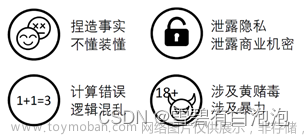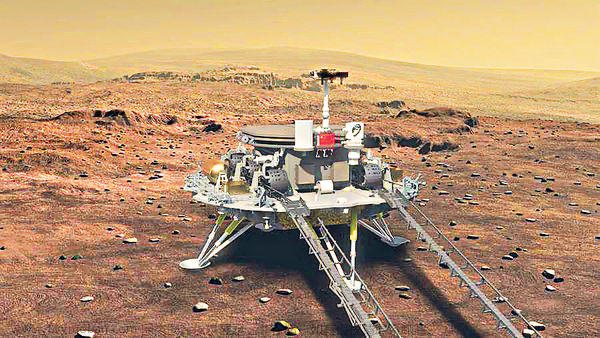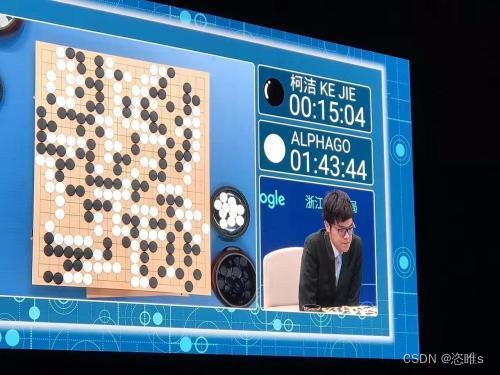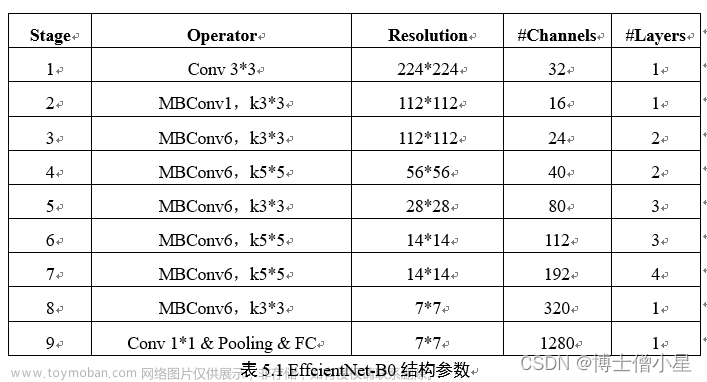Reinforcement learning
1 key concepts
- states
- actions
- rewards
- discount factor γ \gamma γ
- return
- policy π \pi π
2 return
- definition: the sum of the rewards that the system gets, weighted by the discount factor
- compute:
- R i R_i Ri : reward of state i
- γ \gamma γ : discount factor(usually close to 1), making the reinforcement learning impatient
r e t u r n = R 1 + γ R 2 + ⋯ + γ n − 1 R n return = R_1 + \gamma R_2 + \cdots + \gamma^{n-1} R_n return=R1+γR2+⋯+γn−1Rn
3 policy
policy π \pi π maps state s s s to some action a a a
π ( s ) = a \pi(s) = a π(s)=a
the goal of reinforcement learning is to find a policy π \pi π to map every state s s s to action a a a to maximize the return

4 state action value function
1. definition
$Q(s, a) = $return if
- start in state s s s
- take action a a a once
- behave optimally after that
2. usage
- the best possible return from state s s s is m a x max max Q ( s , a ) Q(s, a) Q(s,a)
- the best possible action in state s s s is the action a a a that gives m a x max max Q ( s , a ) Q(s, a) Q(s,a)
5 bellman equation
s s s : current state
a a a : current action
s ′ s^{'} s′ : state you get to after taking action a a a
a ′ a^{'} a′ : action that you take in state s ′ s^{'} s′
Q ( s , a ) = R ( s ) + γ m a x Q ( s ′ , a ′ ) Q(s, a) = R(s) + \gamma max Q(s^{'}, a^{'}) Q(s,a)=R(s)+γmaxQ(s′,a′)
6 Deep Q-Network
1. definition
use neural network to learn Q ( s , a ) Q(s, a) Q(s,a)
x = ( s , a ) y = R ( s ) + γ m a x Q ( s ′ , a ′ ) f w , b ( x ) ≈ y x = (s, a)\\ y = R(s) + \gamma max Q(s^{'}, a^{'}) \\ f_{w, b}(x) \approx y x=(s,a)y=R(s)+γmaxQ(s′,a′)fw,b(x)≈y

2. step
- initialize neural network randomly as guess of Q ( s , a ) Q(s, a) Q(s,a)
- repeat:
- take actions, get ( s , a , R ( s ) , s ′ ) (s, a, R(s), s^{'}) (s,a,R(s),s′)
- store N most recent ( s , a , R ( s ) , s ′ ) (s, a, R(s), s^{'}) (s,a,R(s),s′) tuples
- train neural network:
- create training set of N examples using x = ( s , a ) x = (s, a) x=(s,a) and y = R ( s ) + γ m a x Q ( s ′ , a ′ ) y = R(s) + \gamma max Q(s^{'}, a^{'}) y=R(s)+γmaxQ(s′,a′)
- train Q n e w Q_{new} Qnew such that Q n e w ≈ y Q_{new} \approx y Qnew≈y
- set Q = Q n e w Q = Q_{new} Q=Qnew
3. optimazation

4. ϵ \epsilon ϵ-greedy policy
- with probability 1 − ϵ 1 - \epsilon 1−ϵ, pick the action a a a that maximize Q ( s , a ) Q(s, a) Q(s,a)
- with probability ϵ \epsilon ϵ, pick the action a a a randomly
5. mini-batch
use a subset of the dataset on each gradient decent
6. soft update
instead Q = Q n e w Q = Q_{new} Q=Qnew文章来源:https://www.toymoban.com/news/detail-801150.html
w = α w n e w + w b = α b n e w + b w = \alpha w_{new} + w\\ b = \alpha b_{new} + b w=αwnew+wb=αbnew+b文章来源地址https://www.toymoban.com/news/detail-801150.html
到了这里,关于机器学习(十) — 强化学习的文章就介绍完了。如果您还想了解更多内容,请在右上角搜索TOY模板网以前的文章或继续浏览下面的相关文章,希望大家以后多多支持TOY模板网!










